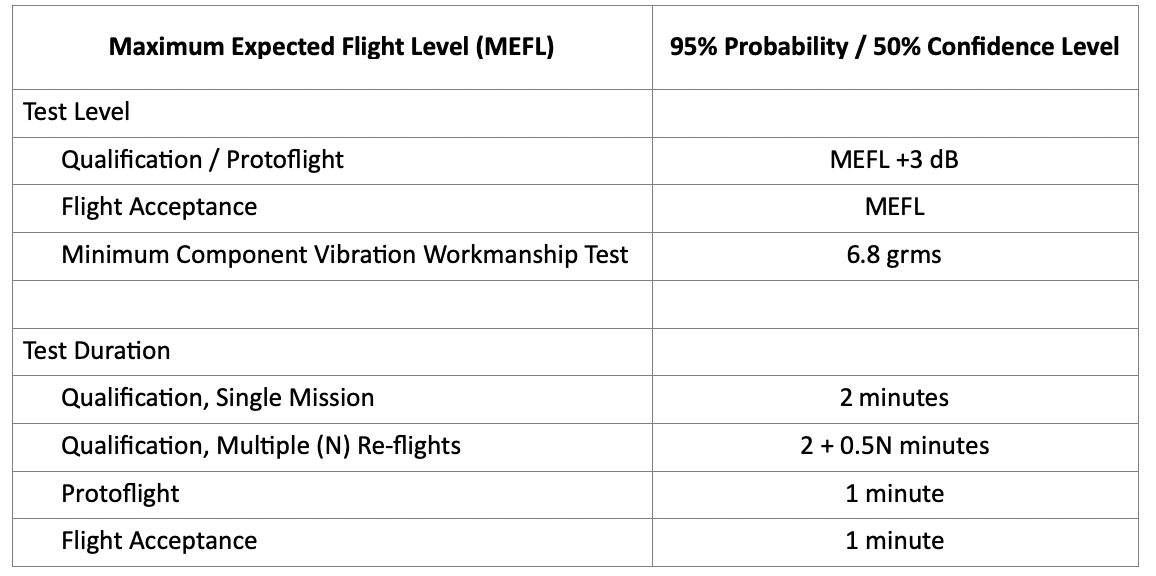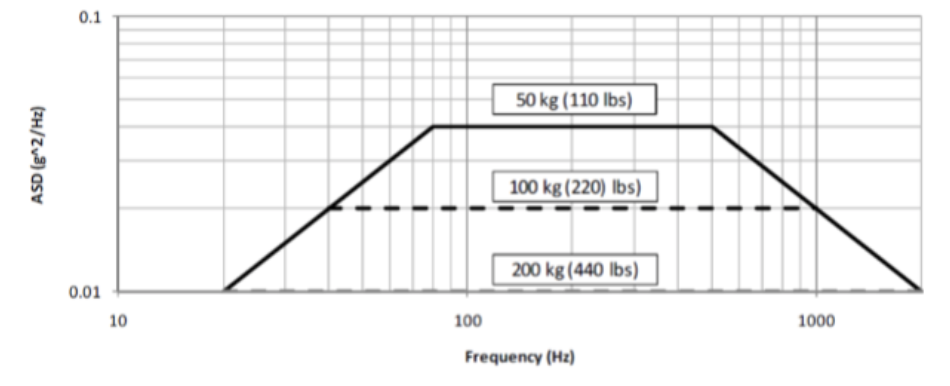National Aeronautics and Space Administration (NASA) is one of the most well-known aerospace agencies in the world.
Therefore, NASA standards are also used as reference for testing laboratory to run testing related to component or sub-system of a spacecraft.
NASA-STD-7002B is part of NASA standard that provides a standard set of flight hardware test requirements.
This Technical Standard has been developed for payloads that will operate in Earth’s orbit but may be developed to include other operating environments.
This Technical Standard provides test requirements which are considered the most critical and the ones having the highest impact on cost and schedule.
This Technical Standard also includes functional tests which are necessary to validate the capability of the hardware to perform its intended function.
This Technical Standard provides test levels, factors, margins, durations, and other parameters. In some cases, these specifics are expressed statistically.
In general, NASA-STD-7002B classifies the test requirements into four categories:
Mechanical Test
Thermal Test
EMI/EMC Test
Functional Test
Inside this Technical Standard, vibration test is included inside the Mechanical Test category.
There are two types of vibration test requirement inside the Mechanical Test category:
1. Sinusoidal Sweep Vibration
ETS Solutions Double 350kN Shaker System with 4.5m table and MIMO Controller testing the Crew Capsule
Sinusoidal sweep vibration test is considered mandatory for a sub-system level and payload/spacecraft unit level.
Sinusoidal sweep vibration test may be performed also at component level when it is suspected that the component is sensitive to this type of vibration environment.
According to this Technical Standard, the purpose of having sinusoidal vibration test is to simulate the low-frequency dynamic launch environment predicted by a coupled loads analysis (CLA) and it should also be able to represent sinusoidal environments when they are present in flight.
The sinusoidal vibration test should also cover the requirements from the launch vehicle provider to prove that the sub-system and payload/spacecraft unit can survive exposure to the low-frequency launch environment.
The low-frequency launch environment commonly can go up to 100 hertz (Hz).
The test frequency range should be defined to cover the significant flight events from the coupled load analysis.
This Technical Standard also mentions that sinusoidal vibration testing shall be performed at levels that are 1.25 times the flight-limit levels and at a sweep rate of 4 octaves per minute. During testing, the sub-system and payload/spacecraft unit shall be configured both electrically and mechanically in the operational mode.
The level of sinusoidal vibration test should be statistically determined according to below probabilities requirement:
2. Random Vibration
ETS Solutions Double 350kN Shaker System with 4.5m table and MIMO Controller testing the Crew Capsule
Unlike the sinusoidal sweep vibration test, random vibration test is considered to be mandatory at the component level.
Though, random vibration test may be performed also at sub-system and payload/spacecraft unit level when it is suspected that the component is sensitive to this type of vibration environment.
According to this Technical Standard, the purpose of having random vibration testing is to qualify the component for the expected mission environment and to provide workmanship screening for all electrical, electronic, and electromechanical components.
Random vibration testing may also be needed for component whose responses are influenced by the mechanically transmitted random vibration due to the vibroacoustic environment.
This Technical Standard mentions that detail random test requirement refers to NASA-STD-7001, Payload Vibroacoustic Test Criteria.
In NASA-STD-7001, random tests are classified into several categories:
Qualification Test
Protoflight Test
Flight Acceptance Test
Minimum Component Workmanship Test
The level and duration of random vibration test should be statistically determined according to below requirement:
Below is the detail spectrum for Component Minimum Workmanship Random Vibration Test:
Below are few practical aspects that need to be considered during vibration testing:
The control accelerometer shall be mounted on the test fixture near the attachment points. If more than one control accelerometer is used, the test levels may be controlled using either an averaging or other control scheme.
The test fixture shall be subjected to a resonance survey up to 2000 Hz prior to the start of testing. If practical, the fixture shall have no resonances within the test frequency range. The test specimen shall be mounted to the fixture via its flight or flight equivalent mounting attachments.
Notching of the acceleration spectral density input may be technically justified in certain cases to eliminate unrealistically high amplification resonant responses and the associated risk of failures that can occur in conventional hard-mounted vibration tests of aerospace hardware
For any enquiries, please feel free to contact us!






